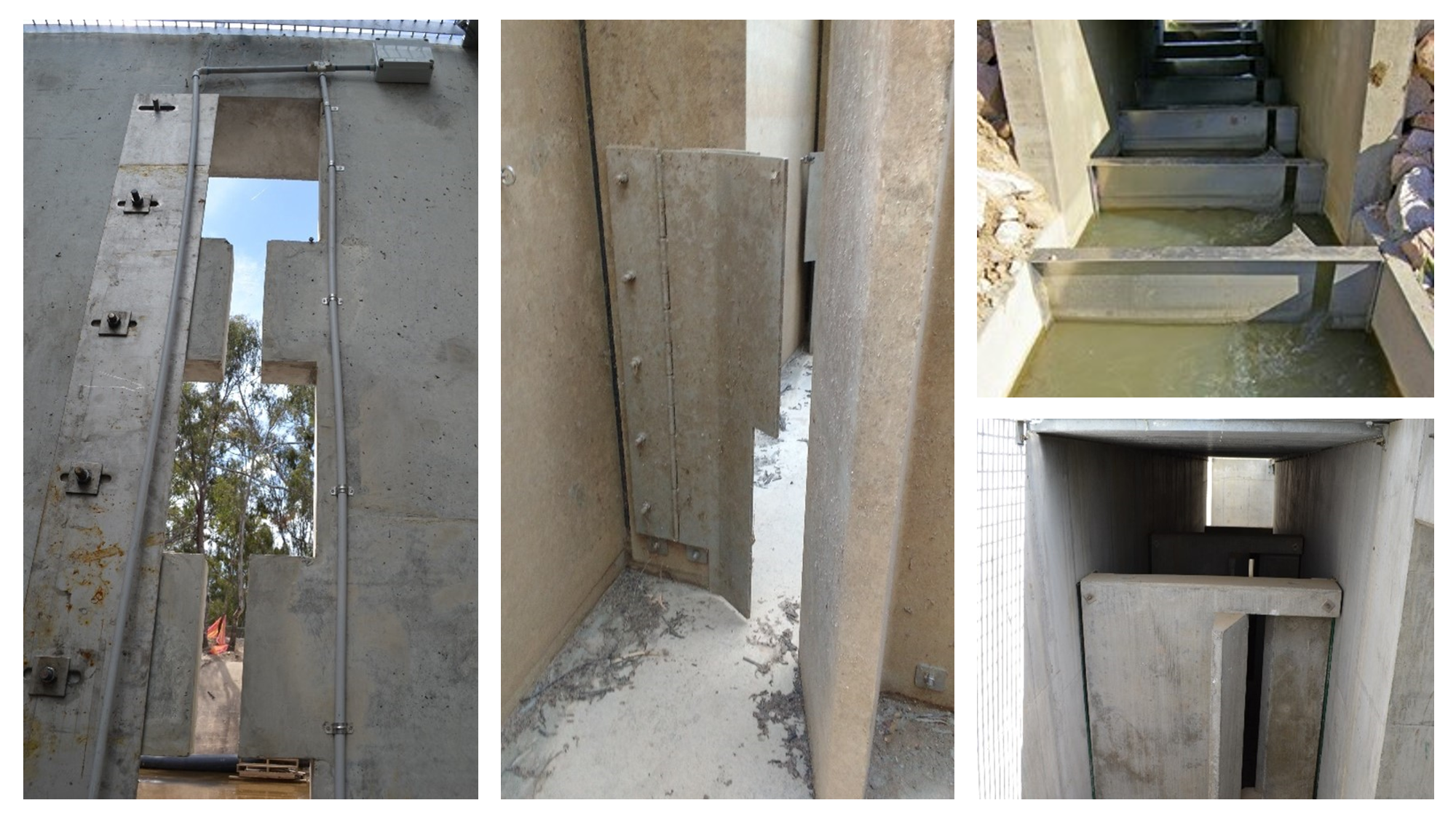|
|
Vertical slot fishwayVertical slot fishway – Planning and design Select from the tabs below In addition to the general information for all fishway types, the following applies to vertical slot fishways. SlopeA slope of 1:30 (vertical:horizontal) has been successful for the passage of bodied species through vertical slot fishways. Where an additional fish passage structure is provided for a size range (i.e. a fish lock), the slope of the accompanying vertical slot fishway is typically increased to 1:18. More recently, fishways have incorporated keyhole slots to slightly steepen the fishway (e.g. 1:25), but this decision needs to be assessed on a site-by-site basis[3]. Slot width and shapeSlot width, combined with head loss and depth, determine the overall discharge of water from the fishway (velocity), and hence the turbulence within each pool, and the size and species of fish that are capable of utilising the fishway[3]. A slot size of up to 250 mm can pass typically fish up to about 650 mm long and a slot of 150 mm can typically pass fish as small as 40 mm long, with slightly narrower slots (e.g. 120 mm) also having been used for small-bodied fish. Narrow slots may have an increased chance of blockage by floating debris[4]. Where there is a need for large fish to pass, there is also a need to widen the slots. For example, in a community were the largest fish is a Murray Cod, a 1.4 m long Murray Cod could have a head width >0.3 m and will therefore require a slot width >0.3m[4]. The issue with wider slot widths is that they require larger pools to dissipate the energy, especially if small fish are also migrating through the fishway, and this usually results in an increase to capital cost[2], keyhole slots can provide a solution by allowing the same fishway to pass small and large fish without increasing turbulence and the required pool size[3]. keyhole slots, and variations on this theme such as bottom or middle sills (slot block-outs), are a major innovation and have been successfully incorporated into many new coastal and Murray-Darling Basin fishways. Middle sills or changing slot shape also have potential for retrofitting to existing fishways to pass much smaller fish, which can be highly abundant[1]. The newer keyhole slot designs, incorporating a sill, seem to be more successful than the traditional rectangular designs because they can pass a greater range of fish sizes[4]. Some vertical slot fishways may have a low and high flow entrances. Water velocity and turbulenceWater velocity is related to pool head loss. The maximum head loss between pools for a vertical slot fishway is typically 100 mm for the passage of small fish[2]. The dimensions of the pools, apart from controlling turbulence, must also be large enough for large species or schooling species to physically fit within the pool and still be capable of swimming or resting. The depth of the pool should also provide some protection against predation from birds. Long vertical slot fishways can include resting pools. This allows for fishes that may not complete their ascent during daylight or may descend the fishway when the light fades. Resting pools may enable fish to remain in the fishway overnight in a long fishway, however more data is required. Resting pools typically have four times the volume of standard pools and occur every 1 m rise in vertical elevation. They are most commonly used in vertical slot fishways, but are also used in rock ramp, bypass, trapezoidal and Denil fishways[4]. Disclaimer: In addition to the standard disclaimer located at the bottom of the page, please note the Fishways (biopassage structures) disclaimer. References
Last updated: 10 May 2021 This page should be cited as: Department of Environment, Science and Innovation, Queensland (2021) Vertical slot fishway – Planning and design, WetlandInfo website, accessed 8 May 2025. Available at: https://wetlandinfo.des.qld.gov.au/wetlands/management/fish-passage/technologies/fishway-options/vertical-slot/planning-design.html |

 — Department of the Environment, Tourism, Science and Innovation
— Department of the Environment, Tourism, Science and Innovation

